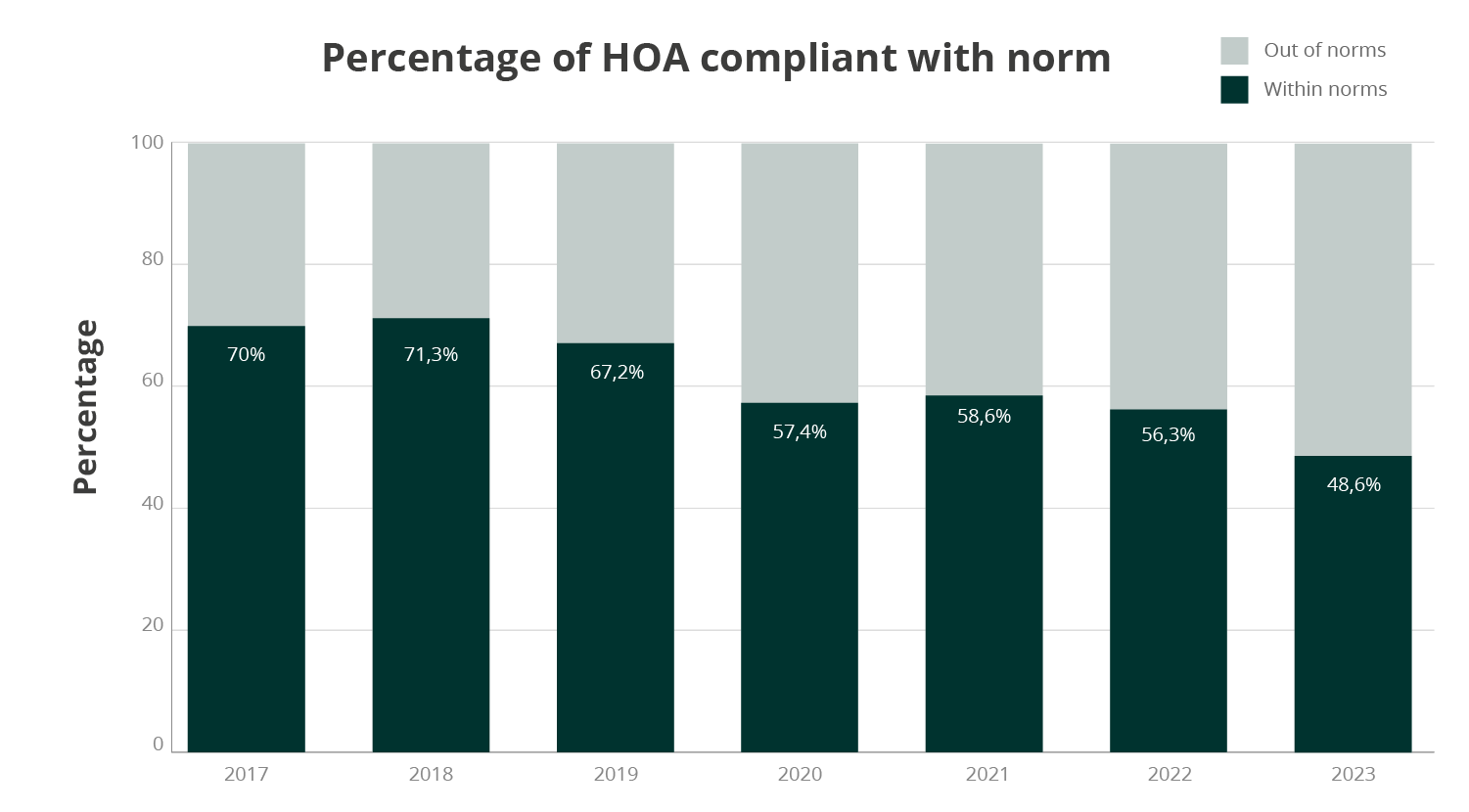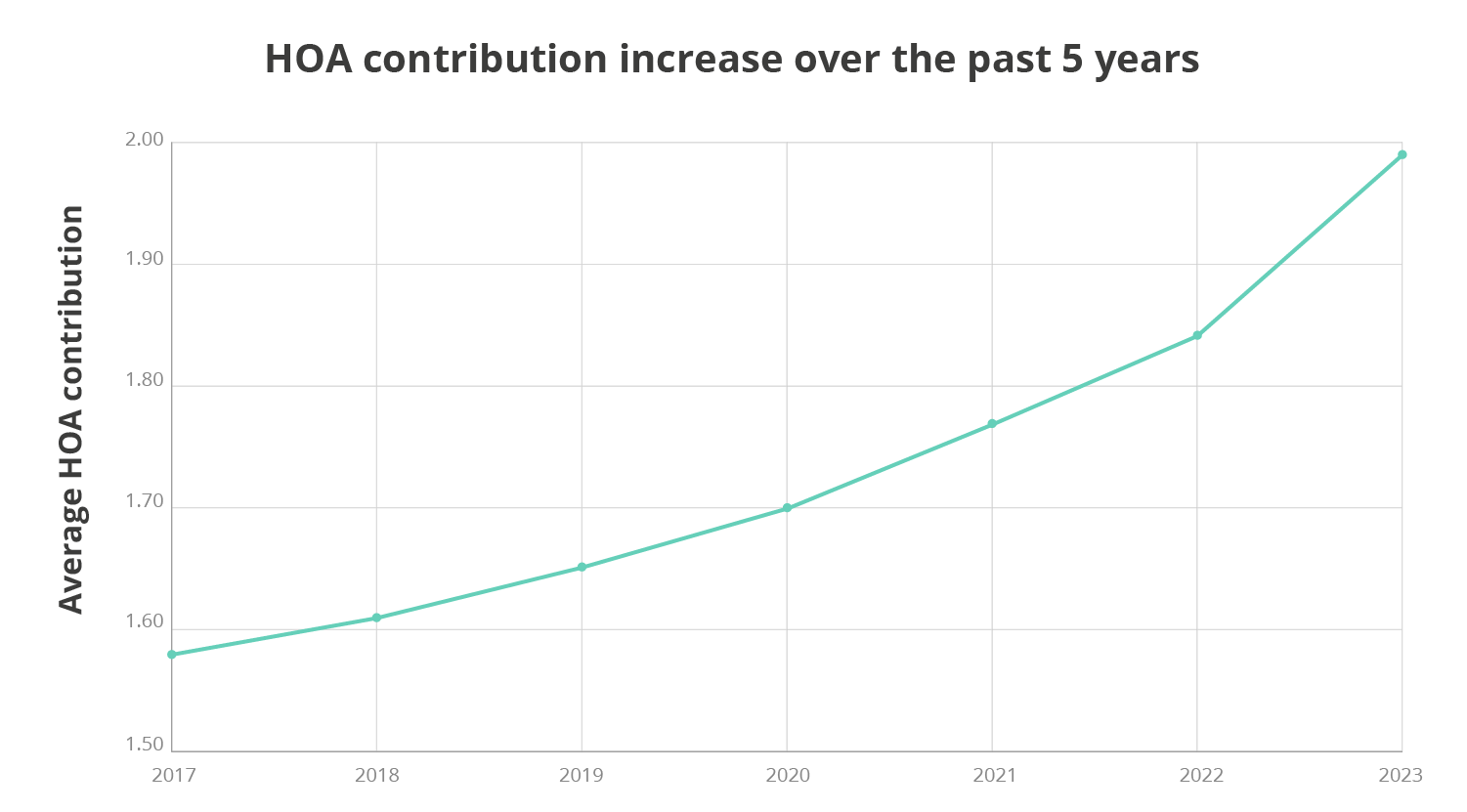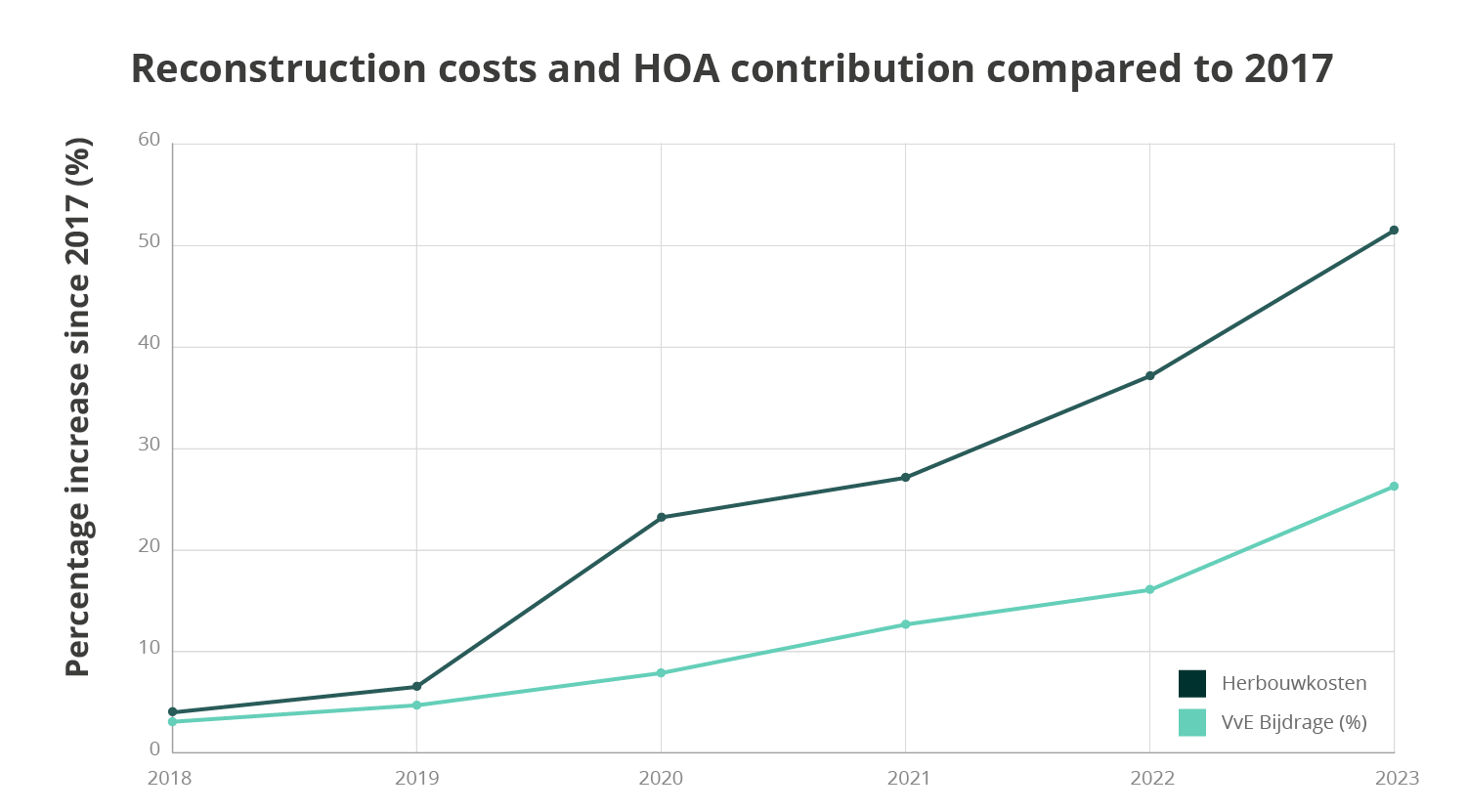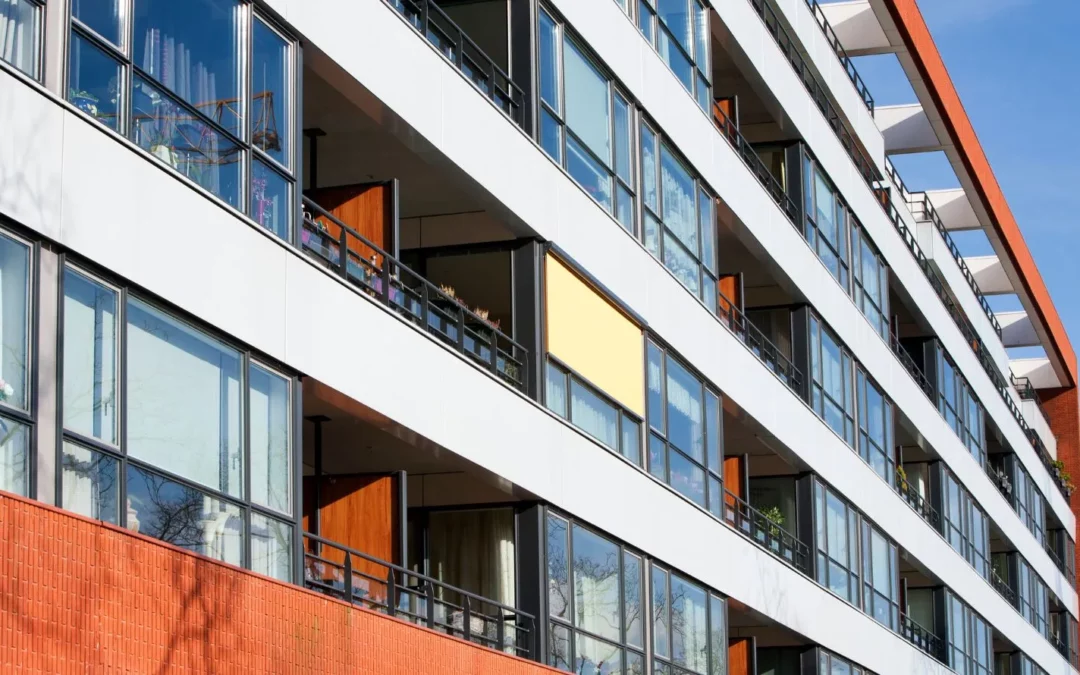The Dutch homeowners’ associations (HOAs) play an important role in the maintenance and management of apartment complexes. Since 2018, the government has established a legal standard that obliges homeowners’ associations to save at least 0.5% of the reconstruction value unless there is a thorough maintenance plan. This cash reserve is intended for major maintenance, such as maintenance of the facade, roof or lifts, but also for sustainability measures such as roof or floor insulation. However, recent data show that this standard is not being properly adhered to. In 2017, approximately two-thirds of homeowners’ associations still met this requirement, but in 2023 this percentage will have fallen to less than half, namely 48.6%.
Fewer and fewer homeowners’ associations meet the savings standard.
The legal standard that stipulates that homeowners’ associations must save at least 0.5% of the reconstruction value appears to be increasingly difficult to comply with. In 2017, 2018 and 2019, approximately two-thirds of the homeowners’ associations met these criteria. However, in subsequent years this percentage has fallen considerably. In 2023 even less than half, namely 48.6%, see the image below. This decline suggests that it is becoming increasingly difficult for homeowners’ associations to meet the set standards.

Graph 1: Percentage homeowners’ associations compliant with norm
Homeowners’ contributions are lagging behind due to increased construction costs.
In recent years, the monthly homeowners’ contribution has changed significantly. The old rule of thumb that stated that each square meter of floor space was equivalent to a contribution of 1 euro per month no longer applies. In 2017, homeowners’ association members already paid at least 1.58 euros per square meter, which will increase to 1.99 euros in 2023, see graph 2. an increase of almost 25%. Despite this increase, the homeowners’ association contribution lags behind the increased construction costs. As seen in graph 3.

Graph 2: Homeowners’ association contribution increase over the past five years

Graph 3: Reconstruction costss and homeowners’ association contribution compared to 2017
Homewners’ associations increasingly vulnerable to unforeseen expenses
Construction costs have increased by more than 50% since 2017, meaning that rebuilding an apartment block worth €3,000,000 in 2017 now costs at least €4,500,000. This significant increase presents homeowners’ associations with a financial challenge. Although monthly homeowners’ association fees have increased, the pace of this increase has not matched the increase in construction costs. This creates a gap that makes homeowners’ associations vulnerable to unforeseen expenses.
Sellers and mortgage providers are at risk.
Our analysis shows that the influence of a financially unhealthy homeowners’ association can be significant. For example, sales prices for apartments with an unhealthy homeowners’ association appear to be up to 10% lower than sales prices of equivalent apartments with a healthy homeowners’ association. This indicates that correct passing on of increased construction costs and fair homeowners’ association contributions are essential.
Conclusion
The financial health of homeowners’ associations is becoming increasingly worrying. Although members of homeowners’ associations have paid increasingly higher contributions in recent years, this contribution will have to increase further to meet the standard. At the same time, you may also wonder to what extent the standard set by the government is still feasible if less than half of the homeowners’ associations can meet it. Additionally, the financial unhealthiness of HOAs poses risks to sellers and mortgage lenders, as poor maintenance can reduce the value of homes.
